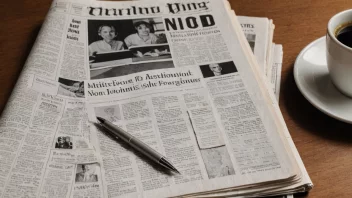In the world of publishing, the journey of a book from manuscript to bestseller is often paved with strategic marketing and timed promotions. One of the most critical stages in this journey is the pre-release buzz, which can significantly influence a book's success. This article will compare two essential elements of pre-release buzz: social media marketing and traditional media coverage. Each plays a distinct role in generating excitement and anticipation among readers, and by examining their pros and cons, we can better understand their effectiveness in ensuring a book reaches bestseller status.
Understanding Pre-Release Buzz
Pre-release buzz refers to the anticipation and excitement generated around a book before its official launch date. This buzz is crucial for authors and publishers as it can determine the initial sales figures and long-term success of the book. The methods of generating this buzz have evolved significantly with the advent of social media, leading to the emergence of two primary channels: social media marketing and traditional media coverage.
Social Media Marketing
Social media platforms like Twitter, Instagram, and TikTok have transformed the way books are marketed. Publishers and authors leverage these platforms to create engaging content that resonates with potential readers. Below are the pros and cons of using social media marketing for pre-release buzz.
Pros of Social Media Marketing
- Wider Reach: Social media allows authors to reach a global audience instantly. A single post can go viral, generating immense interest.
- Engagement: Platforms facilitate direct interaction between authors, publishers, and readers, fostering a community around the book.
- Cost-Effective: Compared to traditional advertising, social media marketing can be more affordable, making it accessible for independent authors.
- Real-Time Feedback: Authors can gauge reader interest and preferences through likes, shares, and comments, allowing for adjustments in marketing strategy.
Cons of Social Media Marketing
- Noise and Competition: With countless books being promoted simultaneously, standing out can be challenging amid the noise.
- Short-Lived Attention: Trends can change rapidly, making it difficult to maintain sustained interest over time.
- Potential for Miscommunication: Misinterpretation of posts can lead to backlash or negative publicity if not managed carefully.
Traditional Media Coverage
Traditional media coverage includes reviews in newspapers, magazines, and appearances on television or radio. This method has been a staple in book marketing for decades and offers its own set of advantages and disadvantages.
Pros of Traditional Media Coverage
- Credibility: Coverage in reputable publications lends credibility to a book, often leading to increased sales.
- Targeted Audience: Publications often have a specific target demographic, allowing authors to reach their intended audience effectively.
- Longevity: Articles and reviews can have a longer shelf life compared to social media posts, maintaining interest over time.
Cons of Traditional Media Coverage
- Limited Reach: Traditional media can be restricted by geography and publication frequency, potentially missing out on broader audiences.
- Higher Costs: Securing coverage in top-tier publications can be expensive and challenging, especially for independent authors.
- Less Interaction: Unlike social media, traditional media does not provide a platform for direct engagement with readers.
Comparative Analysis of Effectiveness
When comparing social media marketing and traditional media coverage, it’s essential to consider the target audience and the nature of the book itself. For instance, a young adult fantasy novel may benefit more from an energetic social media campaign that engages with the youth culture, while a historical biography might find greater success through traditional media outlets that lend authority and depth.
Audience Engagement
Social media excels in creating dialogues and conversations around a book, allowing readers to share their expectations and excitement. In contrast, traditional media coverage tends to focus on imparting information and insights without fostering the same level of interaction.
Cost and Accessibility
Independent authors often find social media marketing more accessible due to lower costs and the ability to reach audiences without the barriers of traditional publishing. However, securing a feature in a respected publication can elevate a book's status and appeal.
Longevity vs. Instant Buzz
While social media can create an immediate buzz that may lead to quick sales, traditional media coverage often ensures that interest persists over time, which can be crucial for sustaining sales following the initial launch period.
Conclusion
In conclusion, both social media marketing and traditional media coverage play vital roles in generating pre-release buzz for bestsellers. Each method has its strengths and weaknesses, and the choice between them may depend on factors such as the target audience, the nature of the book, and the resources available to the author or publisher. A balanced approach that integrates both strategies may provide the most effective results, maximizing reach and engagement while ensuring credibility and longevity in the market. Ultimately, the goal remains the same: to ignite a passion for reading and connect with audiences eager to discover new literary treasures.






